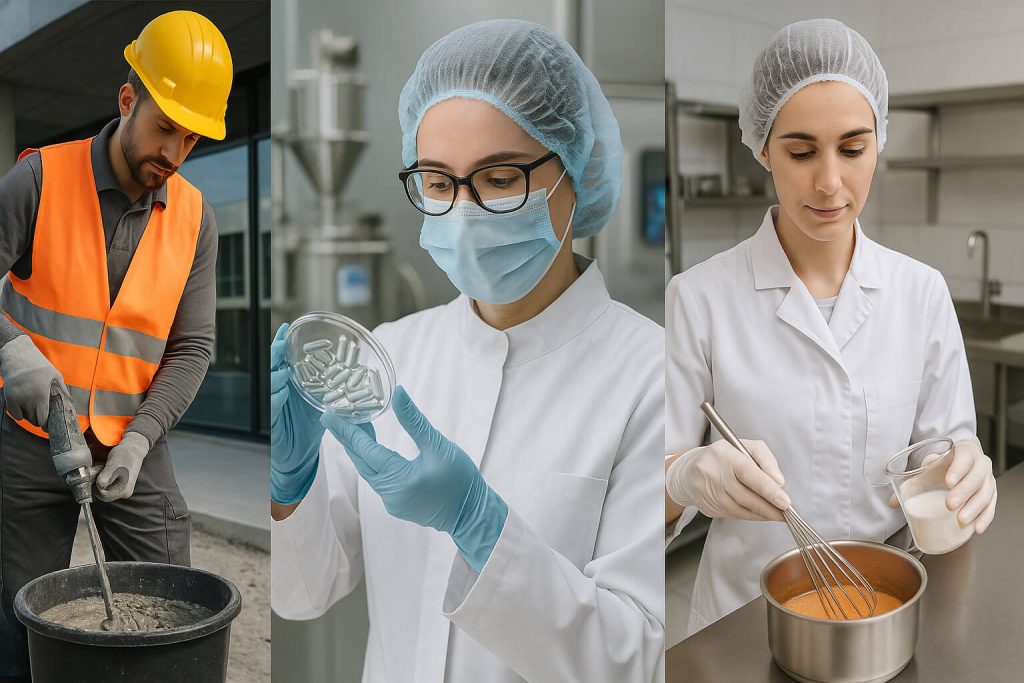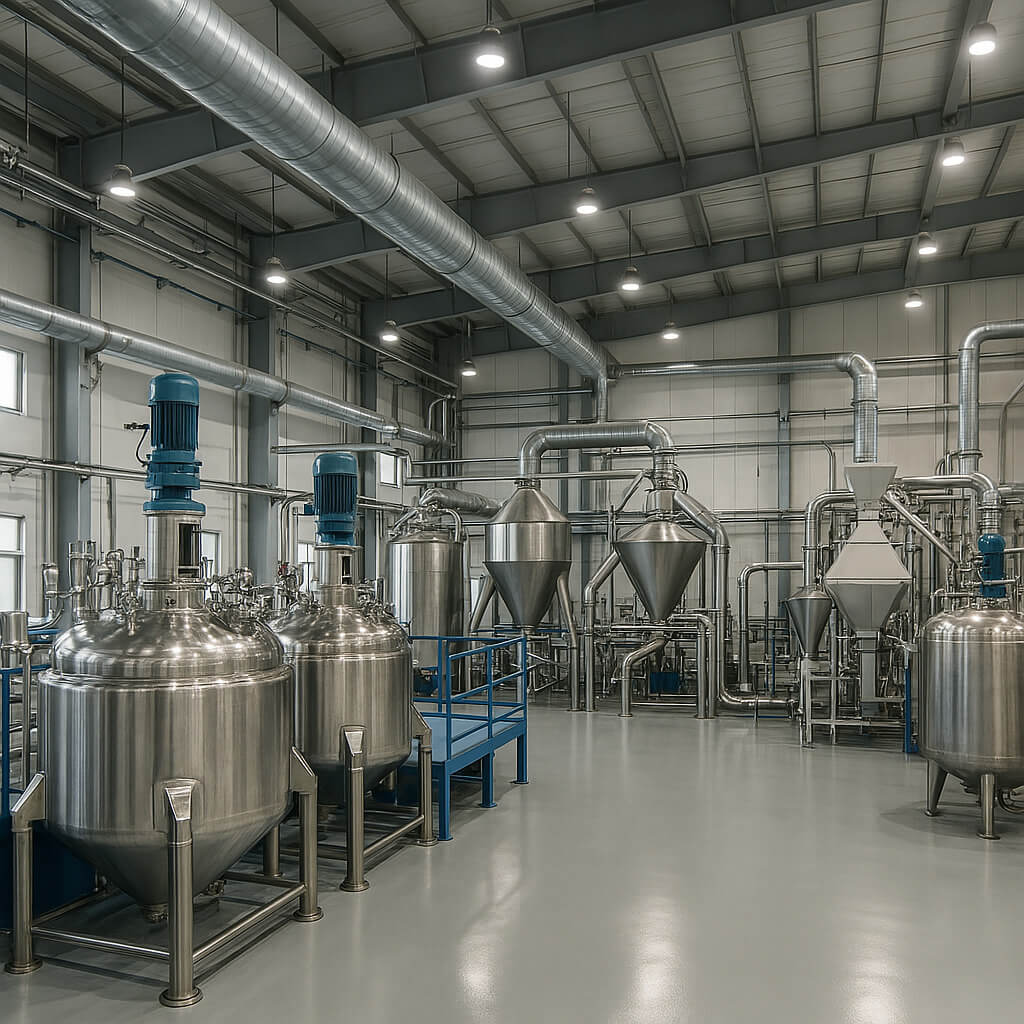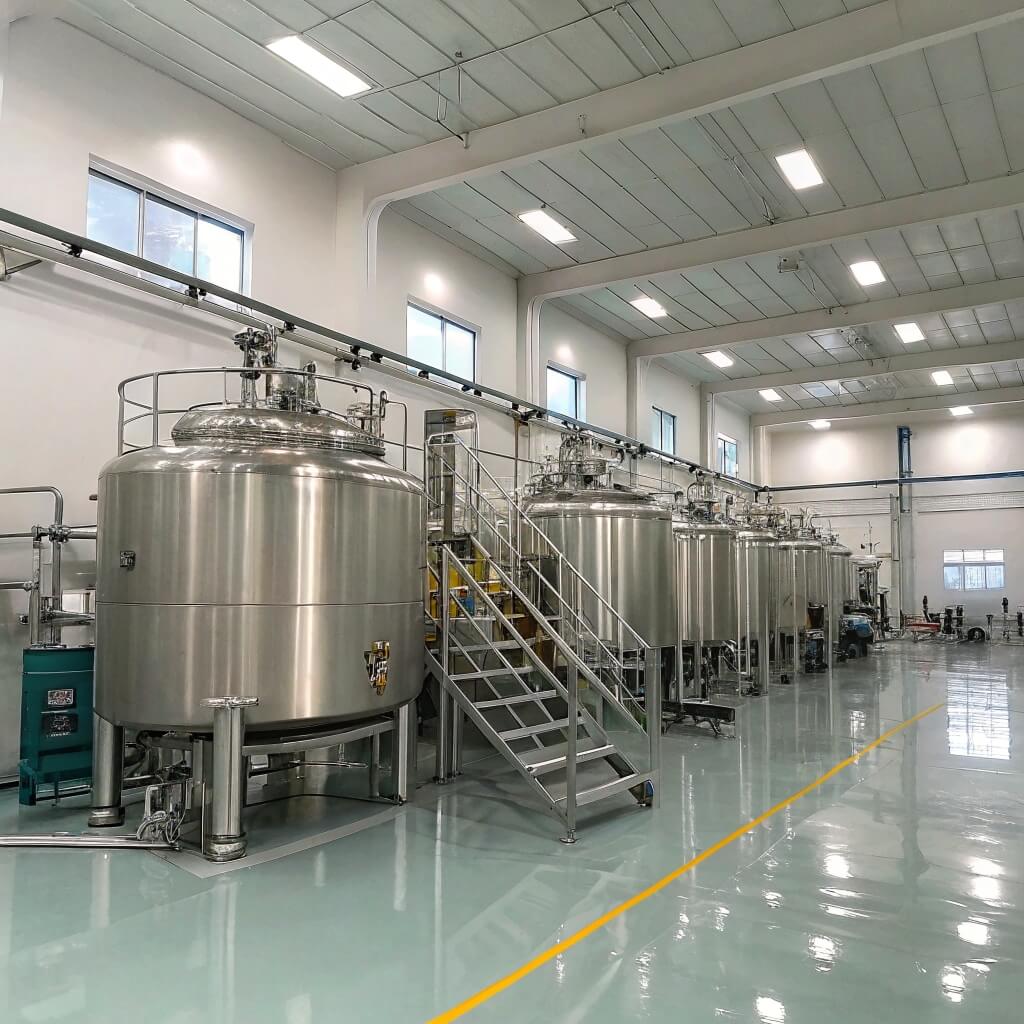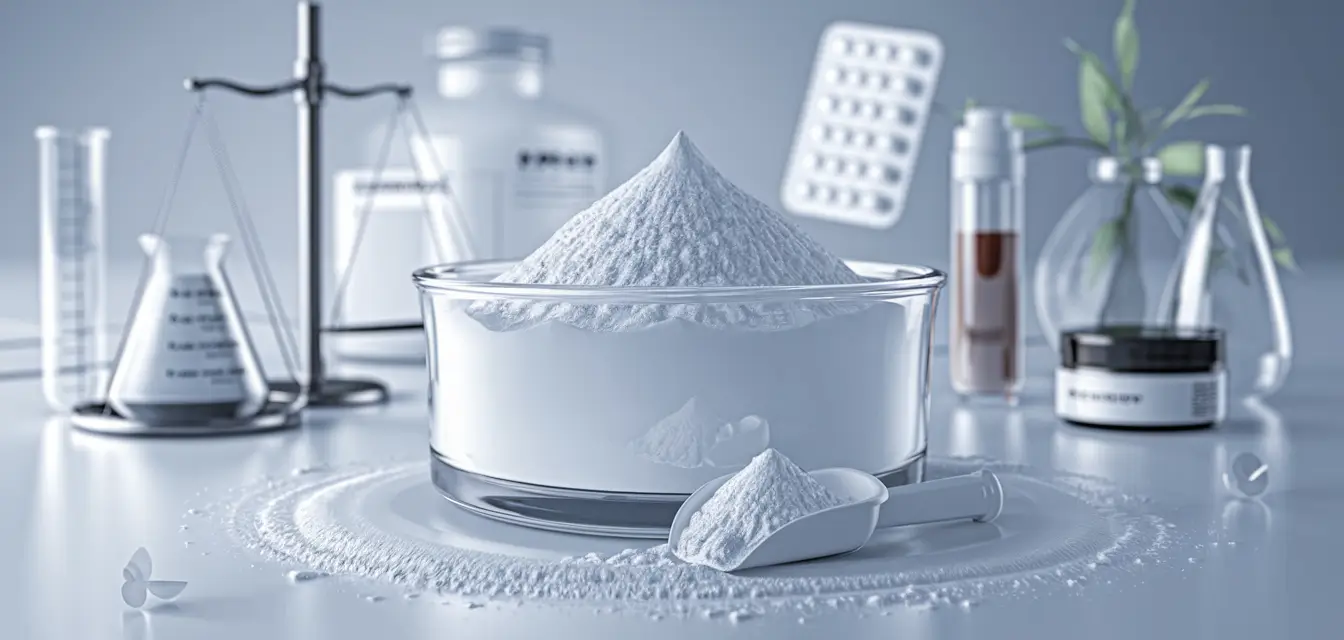Hydroxypropyl Methylcellulose (HPMC) stands as a versatile polymer with remarkable applications across multiple industries. This article addresses the critical questions B2B purchasing managers face when considering HPMC for their operations. We’ll examine its fundamental properties, manufacturing processes, and practical applications in construction, pharmaceuticals, and food production. By understanding the technical specifications and performance characteristics of HPMC, you can make informed decisions that align with your company’s specific requirements and quality standards.

1. What Is HPMC And How Is It Manufactured?
HPMC, or Hydroxypropyl Methylcellulose, is a semi-synthetic, non-ionic cellulose ether derived from natural cellulose. It’s created through chemical modification of cellulose fibers, typically sourced from wood pulp or cotton linters. The manufacturing process involves treating purified cellulose with sodium hydroxide to create alkali cellulose, which is then reacted with methyl chloride and propylene oxide to introduce methoxy and hydroxypropyl groups onto the cellulose backbone.
But here’s what matters most: The ratio of these substitutions directly determines the final properties of the HPMC product, making precise manufacturing control essential for consistent performance.
The production process typically follows these steps:
- Alkalization: Cellulose fibers are treated with sodium hydroxide to break hydrogen bonds and increase reactivity
- Etherification: The activated cellulose reacts with methyl chloride and propylene oxide
- Neutralization: The reaction mixture is neutralized to stop further substitution
- Purification: The product undergoes washing and filtration to remove impurities
- Drying and milling: The material is dried and ground to specific particle sizes
Different grades of HPMC are classified primarily by:
| Classification Parameter | Description | Impact on Applications |
|---|---|---|
| Viscosity | Ranges from 3 to 100,000 mPa·s | Determines flow properties and application suitability |
| Methoxyl content | Typically 19-30% | Affects organic solubility and gelation temperature |
| Hydroxypropyl content | Usually 4-12% | Influences water solubility and surface activity |
| Particle size | Fine powder to granular | Affects dissolution rate and handling properties |
Quality standards for HPMC vary by industry, with pharmaceutical grades meeting pharmacopeia requirements (USP, EP, JP), food grades complying with FDA specifications, and construction grades adhering to industry standards like ASTM or EN. When sourcing HPMC, purchasing managers should verify that suppliers provide comprehensive documentation of product specifications and compliance with relevant standards.
2. What Makes HPMC’s Physical And Chemical Properties Valuable?
The exceptional versatility of HPMC stems from its unique combination of physical and chemical properties. Understanding these characteristics is crucial for selecting the right grade for specific applications.
You might be surprised to learn that HPMC exhibits thermal gelation—becoming more soluble in cold water than hot—a counterintuitive property that enables many of its most valuable applications.
HPMC’s solubility profile is particularly noteworthy:
| Temperature Condition | Solubility Behavior | Practical Application |
|---|---|---|
| Cold water (below 20°C) | Rapidly dissolves | Cold-mix formulations, rapid dispersion |
| Warm water (20-50°C) | Gradually dissolves | Controlled hydration in cement applications |
| Hot water (above 60-70°C) | Forms insoluble gel | Controlled release systems, thermal barriers |
| Organic solvents | Varies by solvent polarity | Coating systems, film formers in non-aqueous media |
The viscosity of HPMC solutions represents one of its most valuable properties. HPMC creates pseudoplastic solutions that thin under shear stress (when stirred or pumped) but recover viscosity at rest. This thixotropic behavior makes HPMC ideal for:
- Spray applications where low viscosity during application but high viscosity after deposition is desired
- Pumping through equipment while maintaining good suspension properties
- Creating stable suspensions that resist settling during storage but flow easily during use
Film-forming capabilities make HPMC particularly valuable in coating applications. HPMC films exhibit:
- Excellent oxygen barrier properties
- Good tensile strength and flexibility
- Transparency and gloss
- Resistance to oils and greases
- Biodegradability under appropriate conditions
The stability of HPMC under various conditions further enhances its utility:
| Environmental Factor | HPMC Stability | Industrial Significance |
|---|---|---|
| pH range | Stable from pH 3-11 | Versatility across acidic and basic formulations |
| Temperature | Functional from -10°C to 200°C | Wide processing and application temperature range |
| Microbial resistance | Naturally resistant to microbial attack | Reduced preservative requirements |
| Light exposure | Minimal degradation | Suitable for transparent packaging and exposed applications |
3. How Is HPMC Used In The Construction Industry?
The construction industry represents one of the largest markets for HPMC, where it functions as a critical rheology modifier and water retention agent in cement-based products.
Here’s the reality: Without HPMC, many modern construction materials would lack the workability, open time, and adhesion properties that contractors rely on daily.
In cement-based mortars and concrete, HPMC provides several key benefits:
| Function | Mechanism | Practical Benefit |
|---|---|---|
| Water retention | Hydrogen bonding with water molecules | Prevents premature drying, ensures complete cement hydration |
| Workability enhancement | Lubricating effect between cement particles | Improves spreadability and reduces application effort |
| Sag resistance | Increases yield stress of fresh mixtures | Enables application of thicker layers without slumping |
| Air entrainment | Stabilizes microscopic air bubbles | Improves freeze-thaw resistance and workability |
| Adhesion promotion | Forms polymer bridges between substrate and mortar | Increases bond strength to various substrates |
Tile adhesives represent a particularly important application for HPMC. Modern thin-set mortars rely on HPMC to provide:
- Extended open time, allowing contractors to cover larger areas before setting begins
- Slip resistance, preventing heavy tiles from sliding down vertical surfaces
- Adjustability time, enabling repositioning of tiles after placement
- Water retention, ensuring proper cement hydration even on porous substrates in hot conditions
In gypsum-based materials like joint compounds and plasters, HPMC contributes:
- Improved workability and smooth application properties
- Reduced cracking during drying
- Better adhesion to substrates
- Extended working time
A case study from a major European construction project demonstrates HPMC’s value: When a contractor switched to an HPMC-modified tile adhesive for a large commercial installation, they reported 15% faster installation times and 30% reduction in callback issues related to tile failures. The slightly higher material cost was offset by labor savings and reduced warranty claims.
4. What Are HPMC’s Applications In Pharmaceutical Formulations?
The pharmaceutical industry utilizes HPMC extensively due to its biocompatibility, stability, and versatile functionality in drug delivery systems.
Consider this critical point: HPMC’s ability to form hydrogels with predictable dissolution rates has revolutionized controlled-release medication, improving patient compliance and therapeutic outcomes.
As a binding agent in tablet formulations, HPMC provides:
- Excellent cohesion of powder ingredients during direct compression
- Good hardness and low friability in finished tablets
- Compatibility with a wide range of active ingredients
- Stability under various storage conditions
Film coating represents another major pharmaceutical application, where HPMC offers:
| Coating Function | HPMC Advantage | Patient Benefit |
|---|---|---|
| Moisture barrier | Forms continuous, hydrophilic film | Protects moisture-sensitive medications |
| Taste masking | Creates insoluble barrier in mouth | Improves palatability of bitter drugs |
| Light protection | Can incorporate UV blockers | Maintains potency of photosensitive compounds |
| Identification | Accepts colorants for product recognition | Reduces medication errors |
| Swallowability | Smooth surface reduces friction | Improves patient experience |
Perhaps the most sophisticated use of HPMC in pharmaceuticals is in controlled-release drug delivery systems. By creating matrix tablets with varying HPMC viscosity grades, formulators can achieve:
- Zero-order release kinetics for consistent drug levels
- Targeted release in specific regions of the gastrointestinal tract
- Pulsatile release for chronotherapy applications
- Extended release durations from 8 to 24 hours
Regulatory considerations for pharmaceutical-grade HPMC are stringent. Materials must comply with:
- Pharmacopeia standards (USP, EP, JP)
- Residual solvent limits
- Heavy metal specifications
- Microbial limits
- Consistency batch-to-batch
5. How Does HPMC Perform In Food And Beverage Products?
The food industry leverages HPMC’s multifunctional properties as a thickener, stabilizer, and emulsifier across diverse product categories.
What’s particularly valuable is HPMC’s ability to function across a wide temperature range, maintaining stability during both freezing and baking processes.
As a thickening agent, HPMC provides:
- Smooth, pseudoplastic texture without graininess
- Stability in acidic conditions where many starches break down
- Clear solutions without cloudiness
- Minimal flavor impact
In emulsion stabilization, HPMC excels by:
| Emulsion Type | HPMC Function | Product Application |
|---|---|---|
| Oil-in-water | Increases viscosity of aqueous phase | Salad dressings, sauces |
| Water-in-oil | Forms protective colloid around water droplets | Low-fat spreads |
| Multiple emulsions | Stabilizes complex interfaces | Flavor encapsulation systems |
| Foams | Increases air incorporation and stability | Whipped toppings, mousses |
Bakery applications represent a major use case for HPMC, where it:
- Improves dough handling properties
- Increases volume in baked goods
- Enhances moisture retention during baking and storage
- Provides freeze-thaw stability in frozen dough products
HPMC has become particularly important in the growing market for gluten-free and plant-based foods. In these applications, it:
- Mimics gluten functionality in bread and pasta products
- Provides binding in meat alternatives
- Stabilizes plant-based dairy alternatives
- Improves texture in egg-free baked goods
The regulatory status of HPMC in food applications is well-established. It’s approved as:
- E464 in the European Union
- GRAS (Generally Recognized As Safe) by the FDA in the US
- A food additive by regulatory bodies in China, Japan, and most other major markets
A blind consumer test comparing conventional and HPMC-stabilized gluten-free breads found that products containing HPMC scored significantly higher on texture, mouthfeel, and overall acceptability, demonstrating its value in improving challenging food formulations.
6. What Technical Considerations Matter When Selecting HPMC?
Selecting the appropriate HPMC grade requires careful consideration of multiple technical factors to ensure optimal performance in specific applications.
The truth is, many formulation failures stem not from HPMC quality issues but from selecting an inappropriate grade for the intended application.
The substitution degree—the extent to which hydroxyl groups on the cellulose backbone are replaced with methoxy and hydroxypropyl groups—fundamentally determines HPMC behavior:
| Substitution Parameter | Typical Range | Effect on Properties |
|---|---|---|
| Methoxyl (%) | 19-30 | Higher values increase organic solubility and lower gelation temperature |
| Hydroxypropyl (%) | 4-12 | Higher values increase water solubility and surface activity |
| Molar substitution | 0.1-1.0 | Higher values increase polymer flexibility and solubility |
| Pattern of substitution | Varies by manufacturer | Affects solution clarity and interaction with other ingredients |
Molecular weight selection directly impacts viscosity, with grades typically designated by their viscosity in a 2% aqueous solution:
- Low viscosity grades (3-100 mPa·s): Suitable for spray applications, coatings, and as secondary thickeners
- Medium viscosity grades (100-4,000 mPa·s): Versatile for most construction and food applications
- High viscosity grades (4,000-100,000 mPa·s): Used for maximum water retention and suspension stability
Processing parameters when working with HPMC require attention to:
- Dispersion techniques to prevent lumping (typically pre-blending with other dry ingredients)
- Water temperature control during hydration (cold water for immediate dissolution, warm water for delayed hydration)
- Mixing equipment selection (high shear for rapid incorporation, gentle mixing for maintaining viscosity)
- Processing pH (extreme pH can accelerate hydrolysis during prolonged heating)
Common application issues and their solutions include:
| Problem | Likely Cause | Solution |
|---|---|---|
| Poor dispersion/fish-eyes | Improper incorporation technique | Pre-blend with other dry ingredients or use hot water dispersion method |
| Insufficient viscosity | Wrong grade selection or degradation | Verify grade specifications and check storage conditions |
| Syneresis in gels | Insufficient concentration or incompatible additives | Increase HPMC concentration or adjust formulation |
| Inconsistent performance | Batch-to-batch variation | Implement quality control testing of each incoming lot |
Conclusion
Hydroxypropyl Methylcellulose (HPMC) stands as a versatile and valuable material across multiple industries due to its unique combination of properties. From enhancing workability in construction materials to enabling controlled drug release in pharmaceuticals and improving texture in food products, HPMC delivers performance benefits that often justify its cost premium over basic alternatives.
For B2B purchasing managers, understanding the technical aspects of HPMC selection—including substitution degree, viscosity grade, and quality standards—is essential for making informed procurement decisions. Working closely with suppliers to match specific grades to your application requirements can optimize both performance and cost-effectiveness.
As formulation challenges grow more complex and consumer demands for improved products increase, HPMC will continue to play a critical role in enabling innovative solutions across industries. Contact reputable suppliers for technical consultation and product samples to determine the optimal HPMC grade for your specific applications.
FAQ Section
Q1: How does temperature affect HPMC’s performance in different applications?
HPMC exhibits inverse solubility with temperature—dissolving readily in cold water but forming gels when heated above its gelation temperature (typically 60-70°C). This property makes it valuable in applications like construction adhesives, where it provides good workability but resists sagging when applied to warm surfaces. In food applications, this thermal gelation creates texture stability during cooking. The exact gelation temperature varies by grade, with higher methoxyl content generally resulting in lower gelation temperatures.
Q2: What are the key differences between HPMC and other cellulose derivatives?
HPMC differs from other cellulose derivatives like Methylcellulose (MC), Carboxymethylcellulose (CMC), and Hydroxyethylcellulose (HEC) in several important ways. Compared to MC, HPMC offers better solubility in cold water and forms clearer solutions. Unlike CMC, HPMC is non-ionic, making it compatible with salt-sensitive formulations and stable across a wider pH range. HEC provides similar thickening but lacks HPMC’s thermal gelation properties. HPMC typically offers better film-forming capabilities than other cellulose derivatives, making it preferred for coating applications.
Q3: Can HPMC be used in environmentally friendly or sustainable product formulations?
Yes, HPMC is well-suited for environmentally friendly formulations. It’s biodegradable, derived from renewable plant sources, and produces no harmful byproducts during degradation. HPMC can replace synthetic polymers in many applications, reducing petroleum dependency. In construction, HPMC-modified materials often require less cement, reducing carbon footprint. For packaging, HPMC films provide biodegradable alternatives to plastic. However, production does involve chemical modification, so it’s not considered “natural” in the strictest sense, though its environmental impact is generally favorable compared to fully synthetic alternatives.
Q4: What quality control tests should buyers request from HPMC suppliers?
Buyers should request comprehensive certificates of analysis including: viscosity measurement at specified concentration and temperature; substitution degree (methoxyl and hydroxypropyl content); moisture content; particle size distribution; pH of aqueous solution; heavy metals content; residual solvents; and microbiological testing for food or pharmaceutical grades. Application-specific testing might include gel temperature, surface tension, film properties, or ash content. Consistency between batches should be verified through lot-to-lot comparison testing. For critical applications, requesting retained samples for future reference is advisable.
Q5: How does the substitution degree of HPMC impact its functionality in specific applications?
Substitution degree fundamentally determines HPMC’s behavior in applications. Higher methoxyl content increases organic solubility, lowers gelation temperature, and enhances film formation—beneficial in pharmaceutical coatings and construction adhesives. Higher hydroxypropyl content improves water solubility and surface activity, making it valuable in emulsions and foams for food applications. The ratio between these substitutions affects hydrophilic-lipophilic balance, critical for emulsion stability. In construction, higher hydroxypropyl substitution improves cement compatibility. For controlled drug release, specific substitution patterns can fine-tune dissolution rates to achieve target release profiles.




